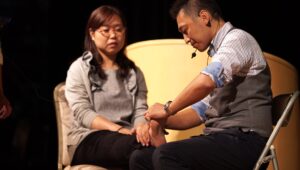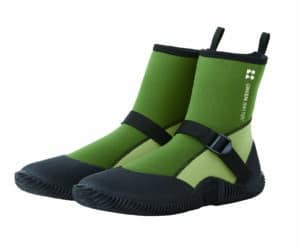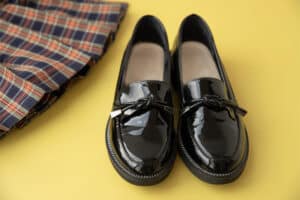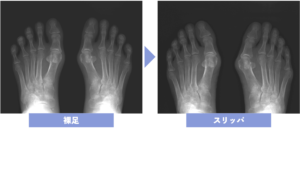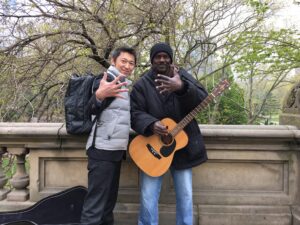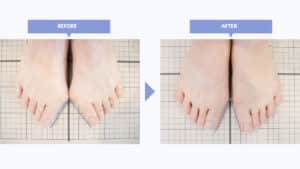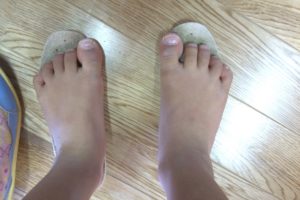第4話|正しい靴の選び方
正しい靴の選び方
足指が靴の中で機能的に動くか
足指の変形に大きく関わっているのが靴です。足指研究所の場合、靴選びの基準は「足指が靴の中で機能的に動かせるか」です。きゅっと締め付けて足指が動かせない状態が続けば、足全体の筋力が低下。開帳足や外反母趾、扁平足の原因になり、さまざまな全身の症状を引き起こします。
靴の中で素足の状態をつくれるのが理想的です。ただ、ぶかぶかでは靴の中で滑る足を踏ん張ろうとして足指が曲がります。足を地面からしっかり保護しつつ、足と靴がしっかり固定でき、指の機能を妨げない靴選びのポイントを紹介します。
ハトメは五つ以上

靴ひもには靴と足を一体化させるテーピングの役割があります。ハトメ(ひもを通す穴)が多いほど足が靴の中で滑りにくくなり、指を曲げない環境を作れます。点で支える丸ひもより、面で支える平ひもで固定した方が足が安定します。
かかとが固い

靴のかかと(ヒールカウンター)には椅子の背もたれと同じ役割があります。背もたれのない車で運転したら体はすぐに疲れます。同様に、ヒールカウンターで手で押してもつぶれないくらいの固さがあれば、足のかかとの骨を靴の中で支えられるため、靴の中で足が安定します。横ぶれも少なくなり、指が曲がりにくくなります。
ねじれない
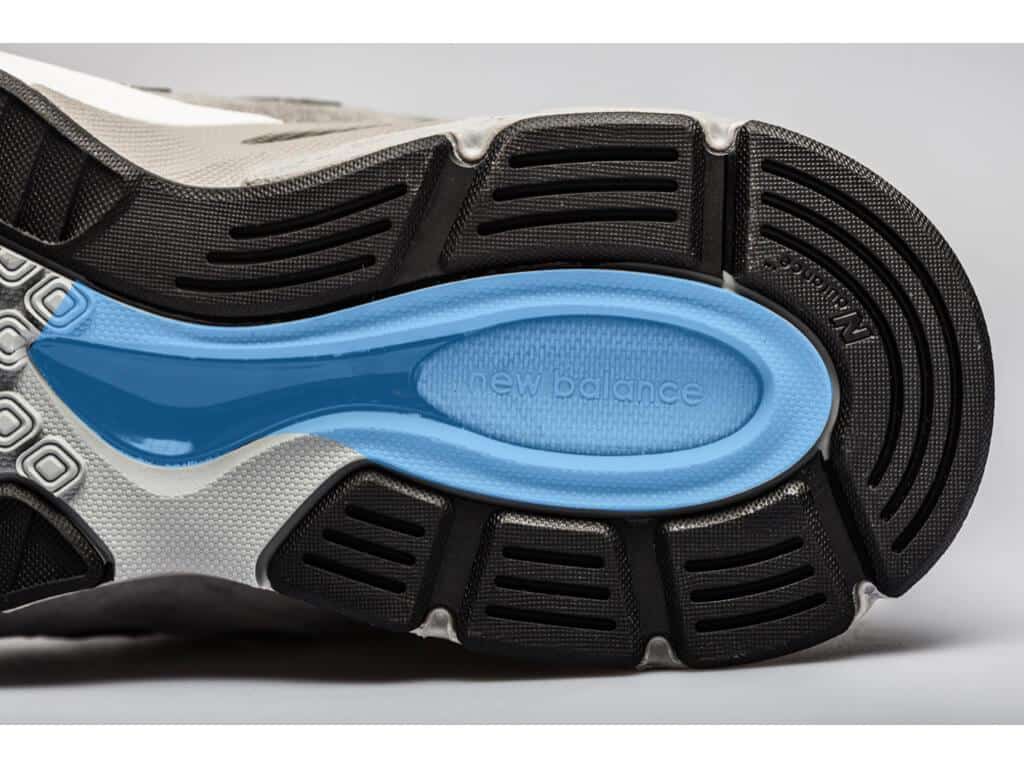
歩くときは、体重の2〜3倍の負荷が靴にかかります。柔らかい靴は、こんにゃくの上に足を乗せるようなもの。底に靴のねじれを防ぐ「シャンク」と呼ばれる強い芯があるものがオススメです。
中敷から足指がはみ出していない
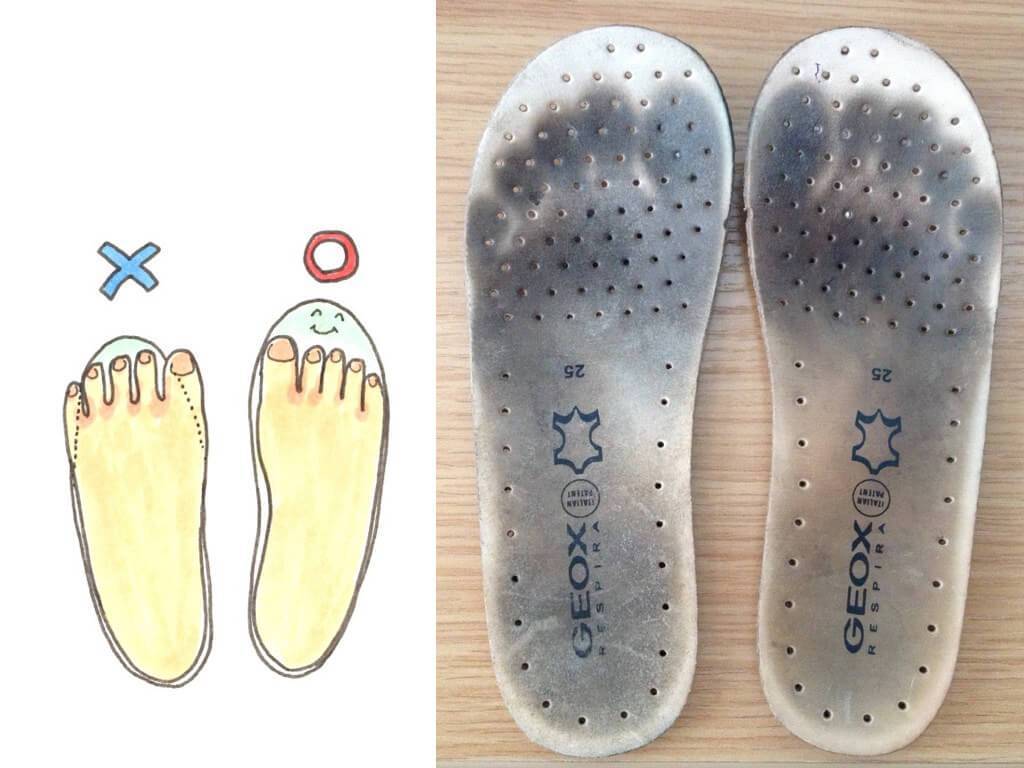
中敷を取り出し、足の乗せてみます。指がはみ出していたら靴の中で窮屈になっているので、足指の機能を回復させるには向いていません。
靴のサイズは足長+1cmが基本
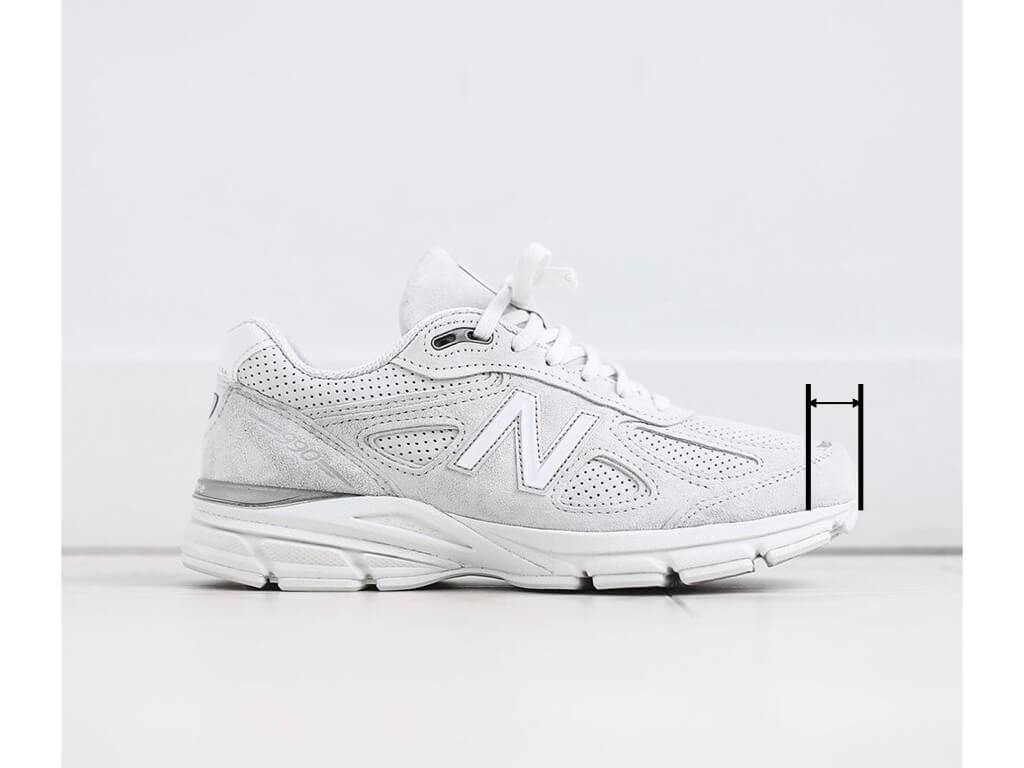
靴の中で足指が自由に動くためには、指先の余り(捨て寸)が1センチ以上は必要です。立った状態で左右の足の長さを測り、長い方の足に合わせて靴を選んでいきます。指先と中敷の先端までに人差し指の横幅くらいの余りがあれば大丈夫です。なお、足指のケアを行うと足長が伸びたり縮んだりしていきますので、半年おきに再計測を行うことをお勧めします。
オススメはYOSHIRO MODEL446
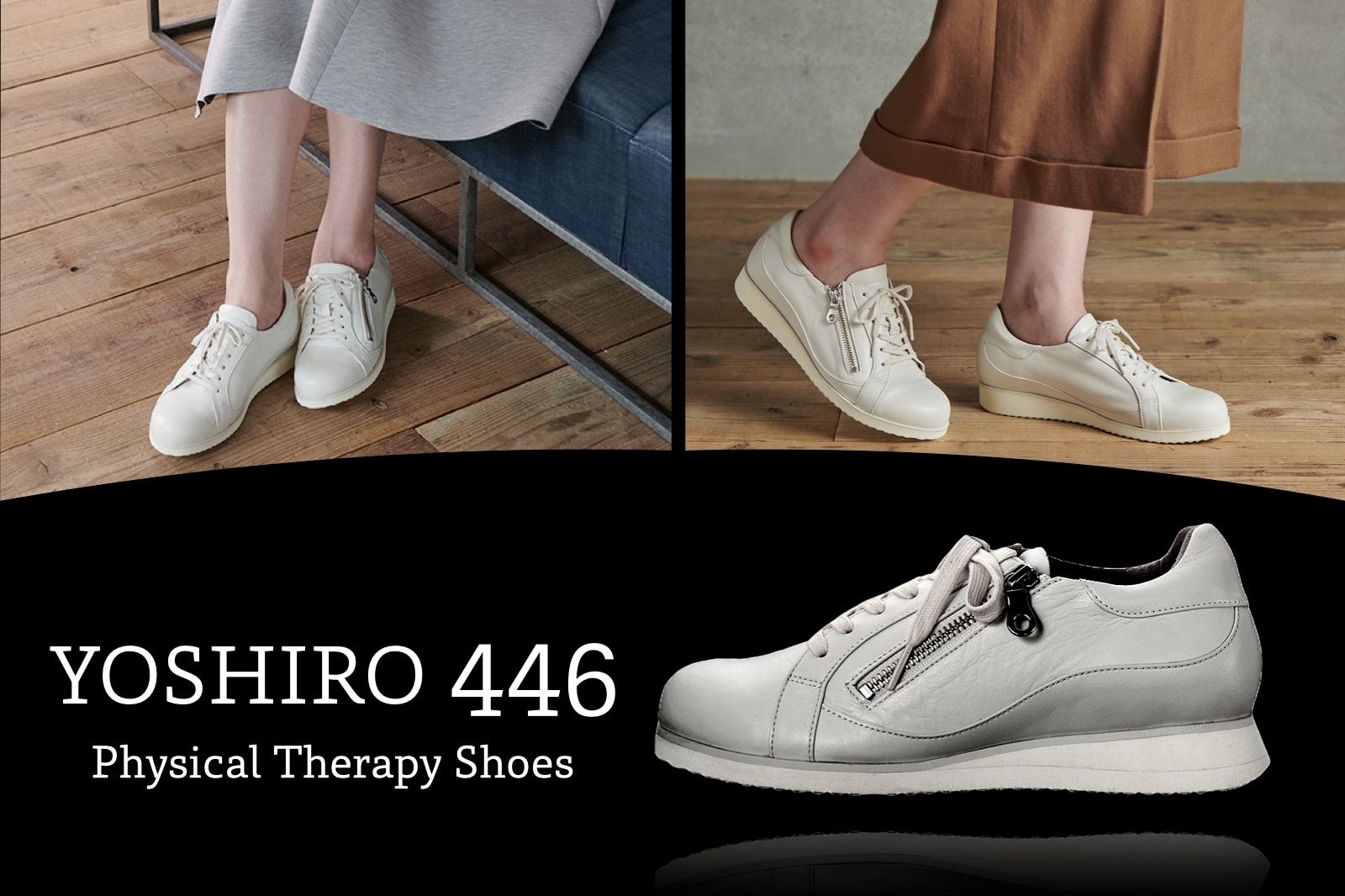
990シリーズは100種類以上あるNBシューズの中で「唯一」矯正用として最適な靴なのですが、2019年にハルメクと共同開発をして矯正靴を作ることになりました。そして2023年にフラグシップモデル「YOSHIRO MODEL446」が誕生。理学療法士として長年のノウハウを培って作っているからこそ、自信を持って採用できる靴でもあります。
子ども靴の選び方
折り返しのマジックテープ

子どもには靴紐は難しいので、マジックテープ式のものを選びましょう。折り返してしっかりと固定ができるタイプがオススメ。マジックテープが2本以上ついていれば大丈夫です。
履き口が細い

子供のかかとの骨はとても小さいです。履き口が細ければ、かかとの骨をしっかりと固定してくれるので、歩くときにとても安定します。
ヒールカウンター

大人の靴と同様に、ヒールカウンターを手で押してもつぶれないくらいの固さがあれば、足のかかとの骨を靴の中で支えられるため、靴の中で足が安定します。横ぶれも少なくなり、指が曲がりにくくなります。
靴のサイズ

靴の中で足指が自由に動くためには、指先の余り(捨て寸)が1センチは必要です。立った状態で左右の足の長さを測り、長い方の足に合わせて靴を選んでいきます。子供の成長は早いので、3ヶ月おきに再計測を行うことをお勧めします。
中敷から足指がはみ出していない

中敷を取り出し、足の乗せてみます。指がはみ出していたら靴の中で窮屈になっているので、足指の機能を回復させるには向いていません。
定期的な靴の買い替えを
靴は基本的にかかとが命ですから、どんなに良い靴でもかかとを踏んでしまったり靴底がすり減ってしまったら寿命です。靴の状態が体の状態を表現していますから、劣化しすぎると体にも大きな負担をかけてしまいます。かかとの補修ができない靴の場合は、半年〜1年に一度の買い替えをお勧めします。ただ、正しい靴を選んでも履き方が悪いと期待した効果は得られません。
子供靴のオススメは瞬足の伊勢丹モデル
子ども靴の中で「唯一」全ての条件を満たしている最適な靴です。矯正靴メーカーが長年のノウハウを培って作っているからこそ、自信を持って採用できる靴でもあります。
ひろのば体操
足指を広げて(=ひろ)伸ばす(=のば)、足指と足のストレッチのこと。左右の足を合わせて1日1回、5分もやれば効果があります。
YOSHIRO SOCKS
足指専門の理学療法士として積み上げてきた20年間の知識や経験を生かし、足指を広げて伸ばす靴下を開発。人間本来の姿勢や運動能力に戻します。
Can you move your toes functionally inside the shoes?
What affect the deformity of your toes are shoes. We at Mirai Clinic set a criterion “whether you could move your toes functionally inside your shoes.” If you can’t move your toes just even a bit due to tightness in your shoes, it’s lowering the muscle strength of your foot. Eventually it’ll lead to a broad foot, a bunion, or a flat foot and cause many other issues in your overall body.
The ideal is to have enough room for your toes inside your shoe so that your foot is in the same condition as being barefoot. However, your toes will bend in order to hold your foot from sliding inside the shoe if the shoe is too big. Now let me tell you the keys to choose the shoes that do not hinder the functions of toes and protect your feet.
Keys to choose shoes
More than 5 shoe lace holes

Shoelaces work as taping to bind your foot and shoe together. The more shoelace holes, the better as they hold your foot securely so that your foot will not slide inside the shoe and prevent your toes from bending. Use the flat shoelaces to stabilize your foot so that it’s held by surface, rather than using round shoelaces which only hold by points.
Solid heels

A heel counter works the same way as the back of a chair. You’d get tired if you drove a car that has no back of the seat. Likewise, if a heel counter is as solid as it wouldn’t easily collapse by hands, it’s surely able to stabilize your foot as it securely supports your heel bone. It has less wobbliness and prevents your toes from bending.
Don’t get twisted easily

When walking, your shoe receives the weight that is two to three times as much as your weight. Wearing shoes with soft materials is as if you were stepping on top of a slab of konnyaku (gooey jelly-like food ingredient made from konnyaku startch, often used in Japanese cuisine). I recommend the ones with solid soles made with a shank, which is a piece of rigid material that serves to stiffen the sole and prevent the shoe from twisting.
Your toes not hanging out of the insole

Take out the insoles and place your feet on them. If your toes are hanging out of the insoles, your feet are in the same condition as wearing high-heels, which is too tight.
Your foot size + 1 centimeter (3/8 inch) = your basic shoe size

In order for your toes to freely move inside a shoe is to have an extra room of 1 centimeter (about 3/8 inch) or more. Measure both your feet while standing and choose shoes according to the size of your longer foot. Make sure to have some space as much as the width of your pointing finger (about 3/8 inch) between the tip of your toe and the edge of the insole. Also, I recommend to have your feet measured every half a year or so as your toe length may change when your take care of your feet.
Buy a replacement periodically
Heels are the life of shoes, so no matter how great your shoes are, their life ends if you step on or wear out the heels of your shoes. How your shoes look is how your health is, so the more worn out your shoes are, the more burdens you’re putting on your body. If the shoes are not repairable, I recommend buying replacements every 6-12 months. Even if you choose the right kinds of shoes, it doesn’t help if you don’t wear them in the right way. In the next chapter will discuss the right way of wearing shoes.




